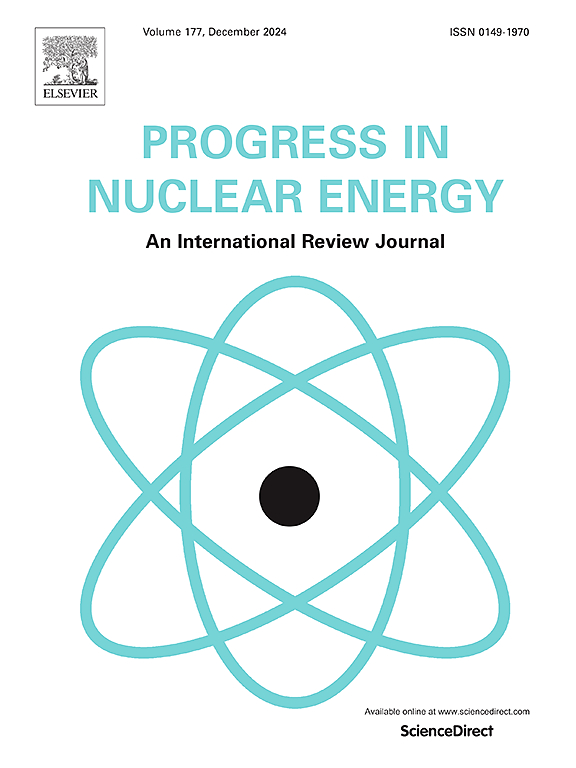Free outflow from the end of a horizontal circular pipe related to flow from the PWR cold leg to the downcomer
IF 3.3
3区 工程技术
Q1 NUCLEAR SCIENCE & TECHNOLOGY
引用次数: 0
Abstract
During a loss-of-coolant accident in a pressurized water reactor (PWR), there is a risk that pressurized thermal shock (PTS) may occur due to the rapid cooling of the downcomer wall caused by the emergency core cooling (ECC) water injected into the cold leg that flows into the downcomer. To predict the PTS, it is necessary to accurately predict the temperature of the ECC water, the collision of the water jet on the downcomer wall, the velocity, thickness, and the spread of the liquid film. Therefore, to help understand this flow phenomenon, we reviewed studies on free outflow from a circular pipe. In many previous studies, experimental findings on the flow regimes, transition conditions between flow regimes, characteristics of the flow shape have been obtained in a form that was almost consistent with each other. And, through theoretical analysis, it was also possible to predict the flow regime and flow surface shape to a certain extent quantitatively. In contrast, when considering the flow from the cold leg to the downcomer, it is necessary to deal with the flow field in a specific situation, such as the flow into a narrow gap rather than a free space, the existence of rounded corners at the outlet of the circular pipe, and the influence of steam flow flowing from the core to the cold leg. However, few previous studies consider these factors, so we summarized them as knowledge that needs to be accumulated in the future. In this review article, 30 references are included.
求助全文
约1分钟内获得全文
求助全文
来源期刊

Progress in Nuclear Energy
工程技术-核科学技术
CiteScore
5.30
自引率
14.80%
发文量
331
审稿时长
3.5 months
期刊介绍:
Progress in Nuclear Energy is an international review journal covering all aspects of nuclear science and engineering. In keeping with the maturity of nuclear power, articles on safety, siting and environmental problems are encouraged, as are those associated with economics and fuel management. However, basic physics and engineering will remain an important aspect of the editorial policy. Articles published are either of a review nature or present new material in more depth. They are aimed at researchers and technically-oriented managers working in the nuclear energy field.
Please note the following:
1) PNE seeks high quality research papers which are medium to long in length. Short research papers should be submitted to the journal Annals in Nuclear Energy.
2) PNE reserves the right to reject papers which are based solely on routine application of computer codes used to produce reactor designs or explain existing reactor phenomena. Such papers, although worthy, are best left as laboratory reports whereas Progress in Nuclear Energy seeks papers of originality, which are archival in nature, in the fields of mathematical and experimental nuclear technology, including fission, fusion (blanket physics, radiation damage), safety, materials aspects, economics, etc.
3) Review papers, which may occasionally be invited, are particularly sought by the journal in these fields.
 求助内容:
求助内容: 应助结果提醒方式:
应助结果提醒方式:


